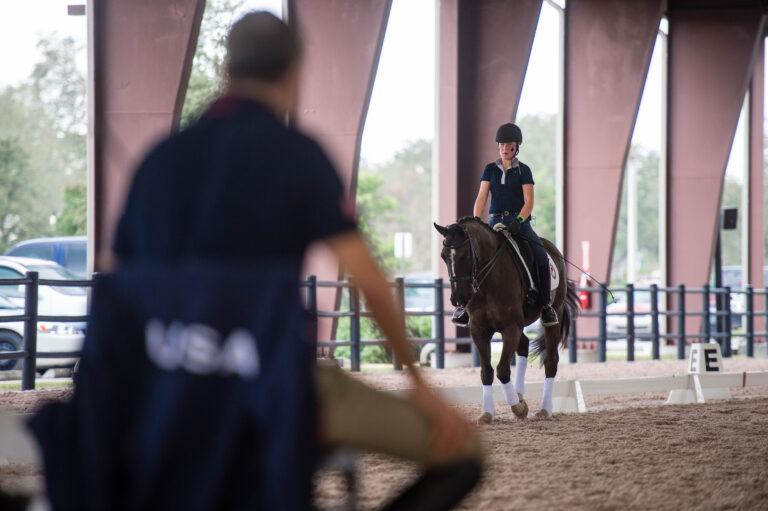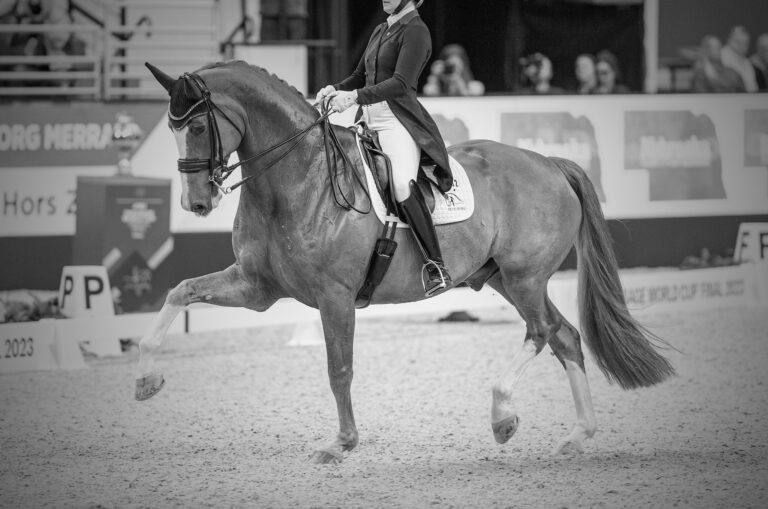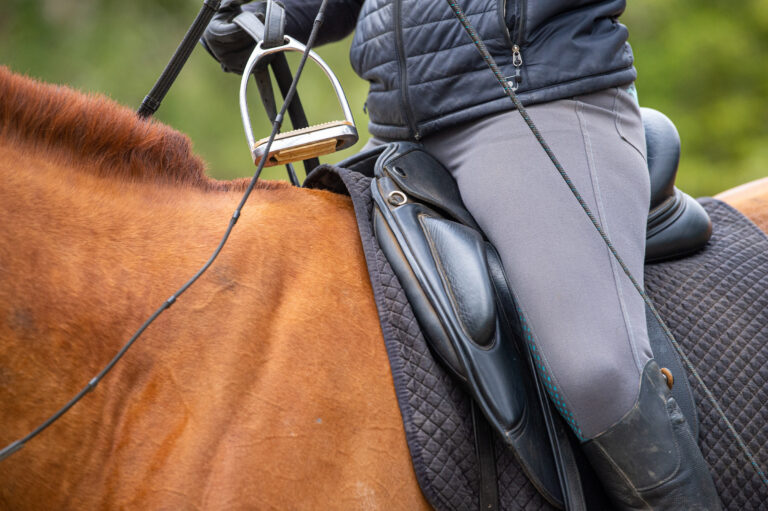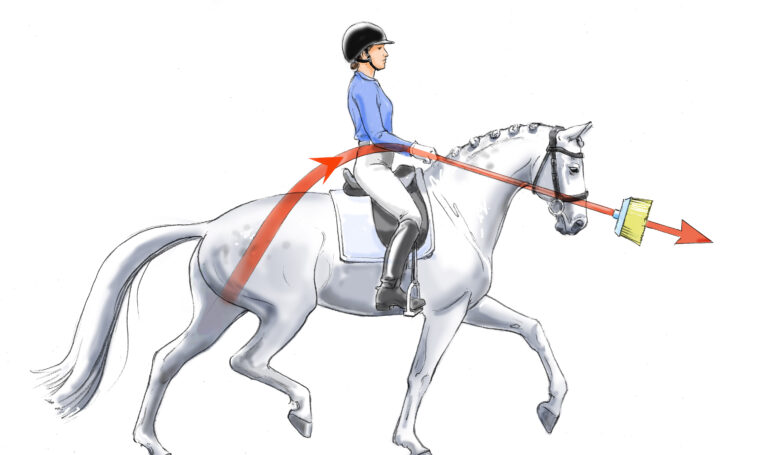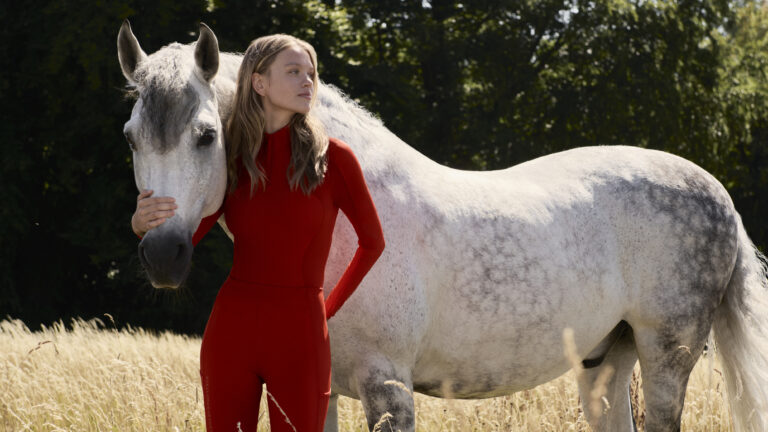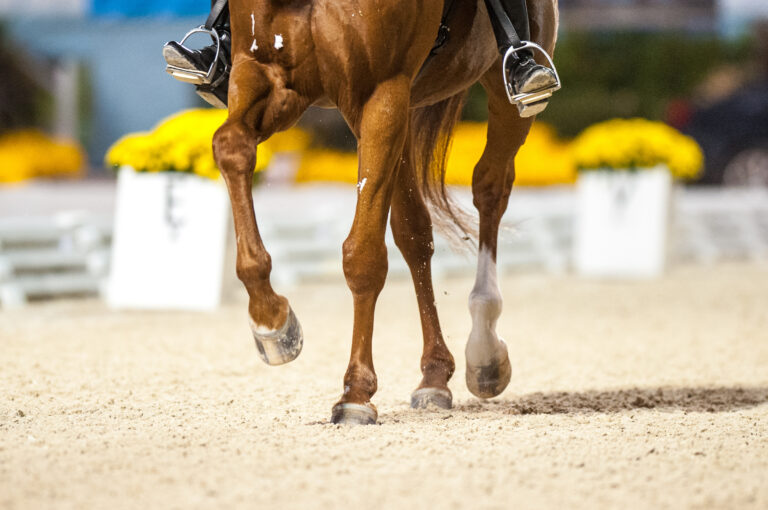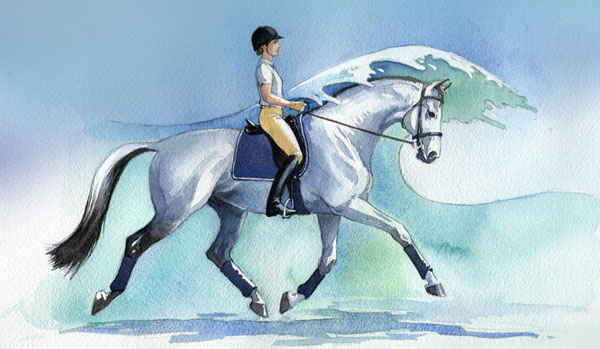This photo shows Laurie Ryan in a First Level Freestyle on her 19-year-old Trakehner gelding Manchet Montana. In her letter, Laurie explained that her goal is to deepen her seat and to ride so that her horse does not pull her off balance.
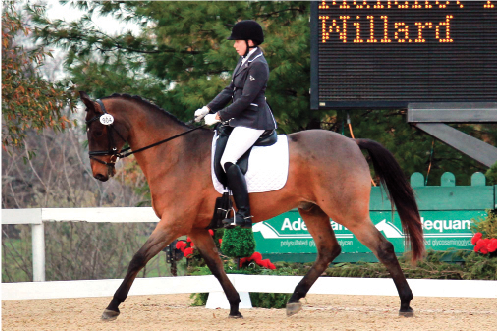
(Photo by Kaitlyn Schwers)
The image shows a very nice moment, and you can see how well Laurie is riding here. She is clearly attempting to give her hands forward so that Manchet doesn’t pull on her. As I study the picture closely, it seems to me that Manchet is pushing with more energy from the hind leg that is striking off. This push-off can make horses become a bit heavier in the contact if they are not carrying their forehand well enough.
Laurie’s seat looks very correct and only when looking carefully do I notice some unwanted tension around her shoulders. It looks like everything is in the proper outline, but she appears to brace her shoulders to be ready for when the horse pulls. This is the trap that Laurie may fall into: Bracing the shoulders will make her rigid in her whole body and a tiny pull from the horse will upset her upper-body balance, bringing her off her seat.
To prevent this from happening, I would like to help Laurie ride with a more stable core. The following unmounted exercise should be very beneficial.
Try this: Stand in front of a friend as though you are sitting in the saddle. Let this friend pull softly on your hands. If you simply brace around your shoulders and try pulling against your friend even a little, your friend will easily shift your weight to the front of your feet. But if instead of bracing your shoulders, you think of lowering your elbows, bringing your shoulders down and engaging your abdominal muscles, you will feel that even though your friend is pulling you forward, your weight will shift to the back of your feet.
Now apply this concept to when you are riding. Whenever the horse attempts to pull, thinking of this sensation will help you deepen your seat and sit more to the back of your seat bones. Then the horse will pull your seat into the saddle instead of pulling you off balance.
Another important feeling to keep in mind is that when you attempt to yield with the rein, that giving moment needs an anchor. Keeping your shoulders anchored while giving the hand slightly forward makes the giving more secure. Imagining that you can give your hand forward only while maintaining stability down your shoulders and back will help you deepen your seat while riding with a lighter contact.
Remember: Giving is not giving up tension. On the contrary, giving is a stretching movement and it requires increased positive tension of the core muscles. If Laurie rides with these ideas in mind, Manchet will feel more support of his body and he will need less support from the rein. I hope that these exercises will help Laurie achieve her goals.
Susanne von Dietze is a leader in equestrian biomechanics. A physiotherapist, licensed Trainer A instructor and judge for dressage and show jumping, she gives lectures and seminars throughout the world, including at the prestigious German Riding Academy in Warendorf. She is a native of Germany and now lives with her husband and three children in Israel, where she competes at the international level. She is the author of two books on the biomechanics of riding: Balance in Movement and Rider and Horse, Back to Back.


